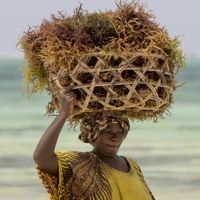

AquaInvest Platform
Authors
Tags
- Seaweed farming (17)
- Gender (3)
- Research (1)
- Biodiversity (1)
- Guidelines (1)
- Seaweed (24)
- Fishery (8)
- Environment, Disaster Risk, and Climate Change (1)
- China (1)
- Region - East Asia and Pacific (2)
- Agriculture (16)
- Korea (4)
- Ecosystem Services (3)
- Policy and Regulations (1)
- Climate Change Adaptation (4)
- Climate Resilience (5)
- Food Safety (3)
- Africa (2)
- Mariculture (21)
- Food Security (11)
- Policy - Food Security (4)
- Gender Equality (2)
- Blue Economy (30)
- Agribusiness (12)
- Climate Change (5)
- AFR Region (1)
- Environment (15)
- Policies and Legislation (2)
- Aquaculture (42)
- Indonesia (1)
- Nutrition & Diets (1)
- women (1)
Blog » Report of the Expert Meeting on Food Safety For Seaweed: Current Status and Future Perspectives
Report of the Expert Meeting on Food Safety For Seaweed: Current Status and Future Perspectives
pigmentation as brown, red or green, and are produced from two sources: wild stocks and aquaculture. Seaweeds have diverse food and non-food applications, some of which have been known for centuries. They are consumed as sea
vegetables in soups and salads, used in sushi wrappings, and added to various food formulations for nutritional profile, food additives and flavour enhancement. About 80 percent of harvested seaweed goes into human consumption, direct and indirect. Their non-food applications include the production of feed, pharmaceuticals, hydrocolloids, cosmetics, fertilizers, cosmeceuticals, biostimulants and bioactive compounds. In 2018, global seaweed production exceeded 32 million tonnes, tripling from about 11 million tonnes in 2000. In 2019, farmed seaweed production amounted to approximately 35 million tonnes, which constituted 97 percent of global output in that year. Global trade in seaweed and seaweed products amounted
to USD 5.6 billion in 2019 alone. Please click here to download the report.
Citation:
FAO and WHO. 2022. Report of the expert meeting on food safety for seaweed – Current status and future perspectives. Rome, 28–29 0ctober 2021. Food Safety and Quality Series No. 13. Rome. https://doi.org/10.4060/cc0846en